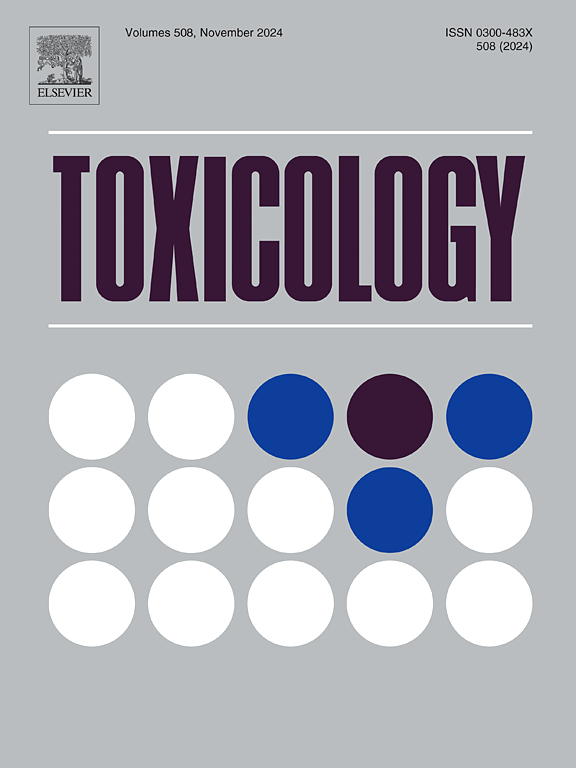开发一种基于多路复用、高含量成像的检测方法,用于评估人类神经祖细胞增殖和凋亡的化学作用
IF 4.6
3区 医学
Q1 PHARMACOLOGY & PHARMACY
引用次数: 0
摘要
美国环境保护署、欧洲研究机构和经合组织之间的合作研究已经产生了一种发育神经毒性体外测试电池(DNT-IVB),用于评估对神经发育至关重要的多种生物过程。开发DNT- ivb是为了解决大量尚未在时间和资源密集的体内DNT指南研究中进行测试的化学物质。为了与DNT-IVB应随着科学发展而发展的建议保持一致,这项工作采用了两个96孔的DNT-IVB检测方法,独立测量人类神经祖细胞增殖或凋亡,并将它们组合成一个384孔的多重检测方法,同时测量增殖、凋亡和细胞活力。开发并优化了384口分析井及其数据分析管道,共筛选了315种化学物质。稳健的Z-prime和严格标准化的平均差值表明,384孔法在增殖和凋亡终点上都很好,比96孔法更好。在315种化学物质中,有158种已经在最初的96口分析中进行了评估。在活性、效力、敏感性和特异性方面,多重分析的结果与最初的96孔分析结果高度相似,并确定了更多的化学物质作为增殖终点的选择性。多路分析活动调用通常匹配96井分析活动调用。该多路384孔分析方法的性能与96孔分析方法相当,但通量显著提高,被提议作为现有的DNT-IVB中包含的96孔增殖和细胞凋亡分析的更新替代方法。本文章由计算机程序翻译,如有差异,请以英文原文为准。
Development of a multiplexed, high content imaging-based assay for assessing chemical effects on proliferation and apoptosis in human neural progenitor cells
Collaborative research between the US EPA, European research institutes, and the OECD has resulted in a developmental neurotoxicity in vitro testing battery (DNT-IVB) that assesses multiple biological processes that are critical for neurodevelopment. The DNT-IVB was developed to address the large number of chemicals that have not been tested in time- and resource-intensive in vivo DNT guideline studies. In keeping with recommendations that the DNT-IVB should evolve with the science, this work has taken two 96-well DNT-IVB assays that independently measure human neural progenitor cell proliferation or apoptosis and combined them into a multiplexed, 384-well assay that simultaneously measures proliferation, apoptosis, and cell viability. The 384-well assay and accompanying data analysis pipeline were developed and optimized, then a total of 315 chemicals were screened. Robust Z-prime and strictly standardized mean difference values indicated that the 384-well assay was excellent for both proliferation and apoptosis endpoints, improving upon the 96-well assays. Out of the 315 chemicals, 158 had been assessed in the original 96-well assays. The multiplexed assay produced highly comparable results to the original 96-well assays in terms of activity, potency, sensitivity and specificity, and identified more chemicals as selective for the proliferation endpoint. Multiplexed assay activity calls generally matched 96-well assay activity calls. With comparable performance to the 96-well assays but with significantly improved throughput, the multiplexed, 384-well assay is proposed as an updated alternative to the existing 96-well proliferation and apoptosis assays that are included in the DNT-IVB.
求助全文
通过发布文献求助,成功后即可免费获取论文全文。
去求助
来源期刊

Toxicology
医学-毒理学
CiteScore
7.80
自引率
4.40%
发文量
222
审稿时长
23 days
期刊介绍:
Toxicology is an international, peer-reviewed journal that publishes only the highest quality original scientific research and critical reviews describing hypothesis-based investigations into mechanisms of toxicity associated with exposures to xenobiotic chemicals, particularly as it relates to human health. In this respect "mechanisms" is defined on both the macro (e.g. physiological, biological, kinetic, species, sex, etc.) and molecular (genomic, transcriptomic, metabolic, etc.) scale. Emphasis is placed on findings that identify novel hazards and that can be extrapolated to exposures and mechanisms that are relevant to estimating human risk. Toxicology also publishes brief communications, personal commentaries and opinion articles, as well as concise expert reviews on contemporary topics. All research and review articles published in Toxicology are subject to rigorous peer review. Authors are asked to contact the Editor-in-Chief prior to submitting review articles or commentaries for consideration for publication in Toxicology.
 求助内容:
求助内容: 应助结果提醒方式:
应助结果提醒方式:


